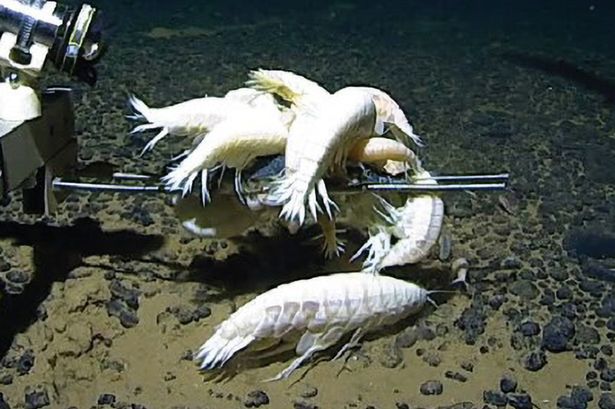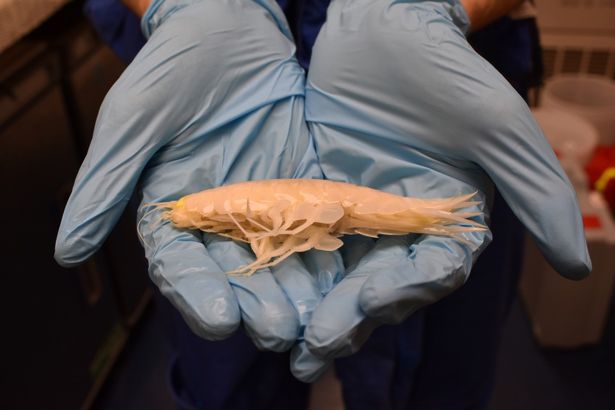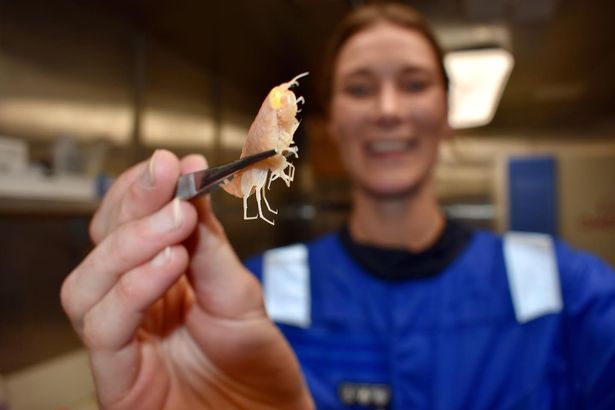A “gigantic” and rare deep sea creature first discovered in the 1800s, could inhabit up to 59% of the world’s deep oceans according to a new study from the University of Western Australia
21:10, 24 May 2025Updated 21:10, 24 May 2025
 Many of the creatures were found(Image: Maroni et al 2025, Royal Society Open Science)
Many of the creatures were found(Image: Maroni et al 2025, Royal Society Open Science)
The largest species of amphipod on Earth could be living in 59% of the world’s deepest oceans, according to a new study from the University of Western Australia.
The “gigantic” and rare deep sea creature was first discovered in the 1800s and reaches whopping lengths of up to… just 34cm. An animal that is only the size of a human’s forearm might not appear deserve the “supergiant” label, but according to deep sea researcher and lead author Dr Paige Maroni they’re “ginormous” compared to other amphipods.
She told Cosmos: “Which is just fantastic when you see them, because amphipods are probably the biggest, baddest predator of the deep sea. Most other deep-sea amphipods max out at about 20cm, if that.”
 It is the largest species of amphipod
It is the largest species of amphipod
Amphipods are small, prawn-like crustaceans that live in oceans all across the world.
They eat everything and anything, so they are very biodiverse and thrive where other predators like fish might disappear at depths deeper than 8,000m.
There have been sightings across 75 sites across the Indian, Pacific, and Atlantic oceans, but Alicella gigantea has always been considered quite rare.
 Dr Paige Maroni said they’re “ginormous”
Dr Paige Maroni said they’re “ginormous”
Not many of them are tempted by the baited traps.
Maroni said dead fish and dead squid smell very good to the amphipods.
Alicella gigantea are captured on their own, or very rarely in groups of up to 4 , but this takes weeks of effort to accomplish.
A recent study suggested only about 0.0001% of the deep seafloor has been seen, and the new study suggests this amphipod is much more common than we thought.
Data from the 195 historic collections of the amphipod indicates that the species lives in the lower abyssal and upper hadal zones at depths of between 3,890 – 8,931m.
 Not many of them are tempted by traps
Not many of them are tempted by traps
The Habitat Suitability Model used projects Alicella gigantea could inhabit as much as 59% of the world’s oceans and all 6 major ocean bodies.
Maroni hopes we will figure out more about its feeding and breeding habits, or its mating strategies.
The model predicted that the creature should be found in the northeast Pacific Ocean, where it had never been captured before. A group of researchers therefore went to the Murray Fracture Zone during the 2023 Trans-Pacific Expedition to find them – and they were there.
 They were there in their twenties and visualised in their masses(Image: Maroni et al 2025, Royal Society Open Science)
They were there in their twenties and visualised in their masses(Image: Maroni et al 2025, Royal Society Open Science)
They were there in their twenties and visualised in their masses.
They collected DNA and found that the specimens, collected from across the globe and separated by oceans and continents are genetically the same species.
For the latest breaking news and stories from across the globe from the Daily Star, sign up for our newsletter by clicking here .
